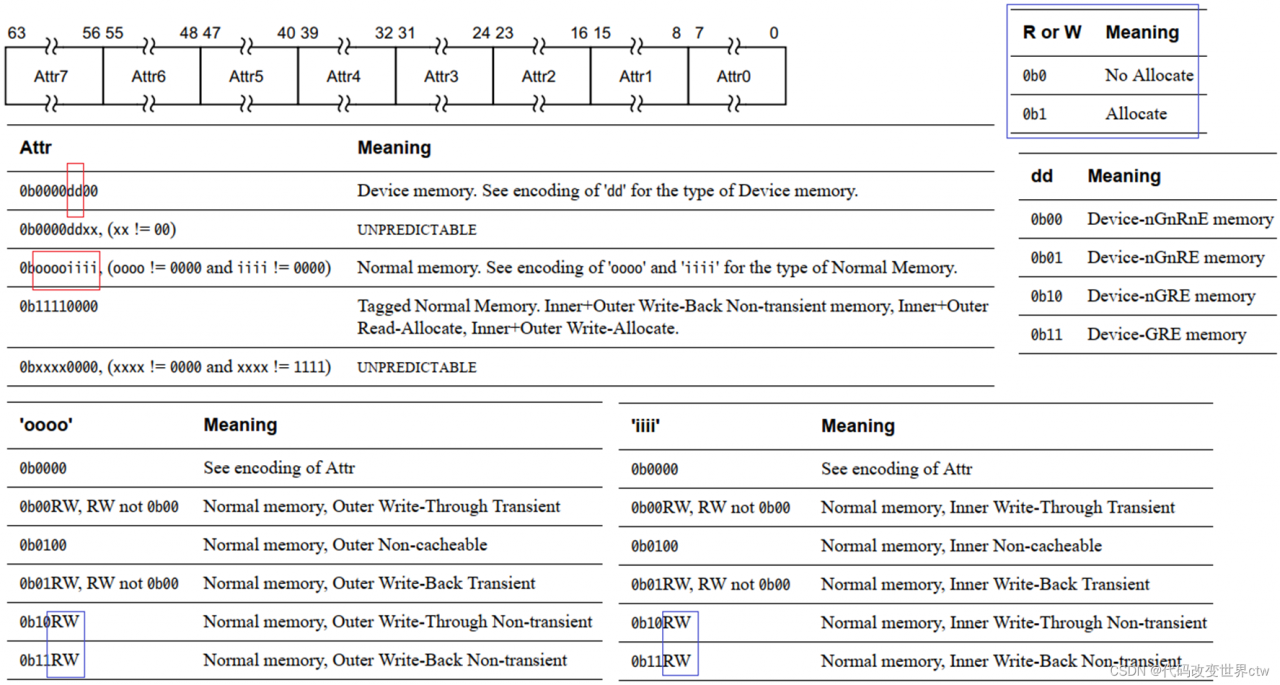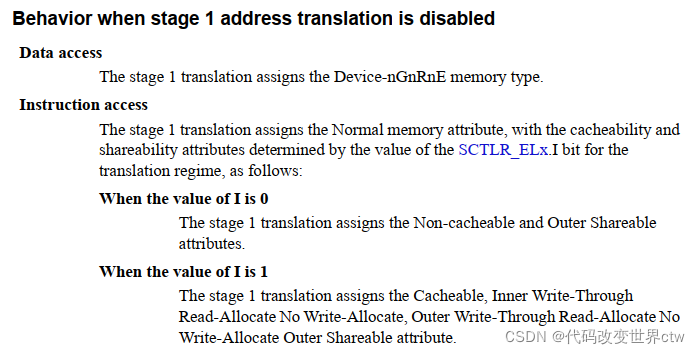引流关键词:缓存,高速缓存,cache, CCI,CMN,CCI-550,CCI-500,DSU,SCU,L1,L2,L3,system cache, Non-cacheable,Cacheable, non-shareable,inner-shareable,outer-shareable, optee、ATF、TF-A、Trustzone、optee3.14、MMU、VMSA、cache、TLB、arm、armv8、armv9、TEE、安全、内存管理、页表…
快速链接:
.
??? 个人博客笔记导读目录(全部) ???
在学习MMU章节时,我们发现在页表的entry中,BIT[4:2]指向了MAIR寄存器,该寄存器描述了内存属性,其实就是cache的缓存策略属性(inner\outer\shareable\cacheable)。 也就是页表中的每一个entry都指向了一个这样的Attr。 那么我如果把MMU disable了呢? 就没有页表的事了,那么此时缓存的策略是怎样的呢?
我们在ARM ARM的D5.2.9 The effects of disabling a stage of address translation章节的Behavior when stage 1 address translation is disabled 中找到答案
MMU关闭后,cache的缓存策略总结如下:
- data的访问,视为 Device-nGnRnE
- 指令的访问,要根据
SCTLR_ELx.I的值:
(1)SCTLR_ELx.I == 0,视为Non-cacheable、Outer Shareable
(2)SCTLR_ELx.I == 1,
Cacheable
Inner Write-Through, Read-Allocate, No Write-Allocate
Outer Write-Through, Read-Allocate, No Write-Allocate
Outer Shareable attribute
版权声明:本文为weixin_42135087原创文章,遵循CC 4.0 BY-SA版权协议,转载请附上原文出处链接和本声明。